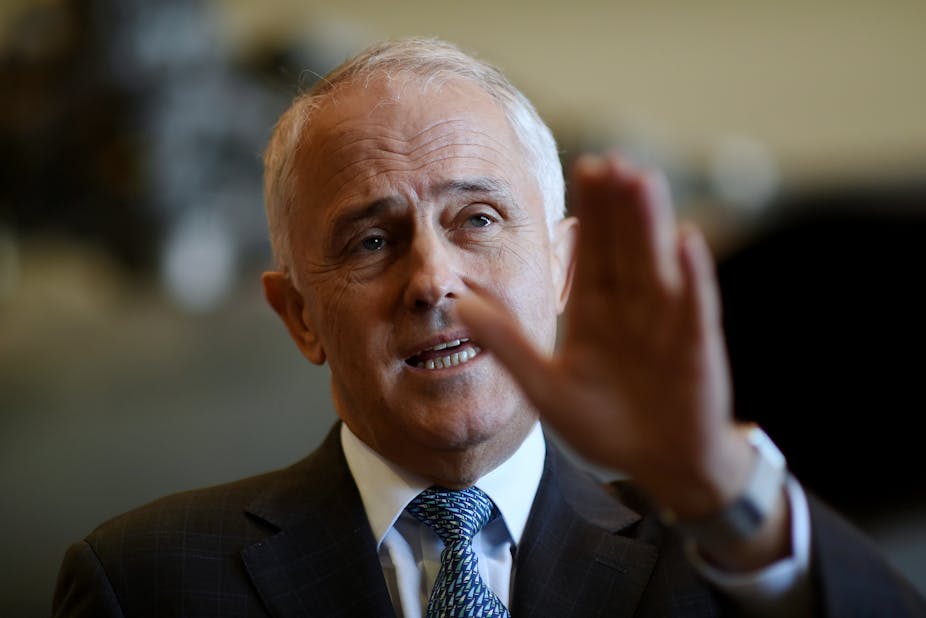Come July 2, Bill Shorten and Labor are hoping they will party like it’s 1931. That was the last election when a first-term government was given its marching orders.
While there are certainly differences between Labor’s hapless leader James Scullin and Prime Minister Malcolm Turnbull, there are similarities that might hint a Coalition victory is far from assured.
What happened then?
In October 1929, the ALP returned to the government benches it had vacated in 1916 following the first party split. It was a resounding electoral victory that saw a huge swing to the ALP and 15 new seats won from the conservative coalition of the Nationalist and Country parties.
In a final humiliation for the ruling conservatives, Labor’s victory would even claim Prime Minister Stanley Bruce’s seat. It was the first time a prime minister lost their seat, and was not repeated until John Howard lost Bennelong in 2007.
But Labor’s triumph was somewhat diminished as only the 75 House of Representatives seats were contested in 1929. Unaccompanied by the usual half-Senate election, the incoming government’s position was not as dominant as it might have been.
So, how did things go so bad so quickly for the Scullin government?

External factors were certainly not favourable. Just days after the new ministry was sworn in, the Great Depression began to wreak havoc on Australia’s already poor economic position.
It was an inauspicious beginning. But, ultimately, it was domestic factors that led to rebel Labor MPs crossing the floor to bring down the government. Just two years after a landslide victory, Labor suffered a crushing defeat in 1931.
Can a comparison be drawn?
To varying degrees, the key factors that led to Labor’s inglorious rout after just one term can also be applied to Turnbull.
A hostile Senate that rejected key economic measures thwarted Scullin’s response to the Great Depression. This led to a perception of incompetence and indecisiveness.
Similarly, Turnbull – like the man he ousted, Tony Abbott – has not been able to work productively with the Senate crossbenchers in efforts to repair the budget bottom line. Labelled “feral” by Abbott and a “disgrace” by Turnbull, the Senate has blocked key reforms, making the government appear impotent.
But the greatest single contributing factor to Scullin’s demise was disunity within his own party. Such were the tensions between the moderate and radical wings, a second ALP split took place with an alternate Labor Party under Jack Lang’s leadership forming.
While there is little chance of this happening with Turnbull’s Liberals, the fractures between the moderate and right wings are clear. These divisions are all the more pronounced due to the extraordinary circumstances that saw Turnbull unseat Abbott.
Even before he rolled Abbott, the Liberal Party’s right wing loathed Turnbull for his comparatively progressive views. In particular, his support for same-sex marriage and action on climate change has inflamed the passions of the most conservative MPs.
A formal split is unlikely, but the Liberal Party is becoming increasingly divided between Abbott’s conservatives and Turnbull’s moderates. Conservative volunteers reportedly refused to campaign with sitting MP Fiona Scott in Lindsay for allegedly voting for Turnbull in the spill.
Conservative supporters are also reportedly cancelling party donations in response to Turnbull’s superannuation reforms.
In the wake of Turnbull’s successful leadership challenge, conservative commentator Andrew Bolt suggested there was “loose talk” of a breakaway conservative party. So far it has proved nothing more than loose talk – but if the conservative right does not seek a Liberal split, it does at least want to wrestle back control from the moderates.
Key differences
Scullin’s prime ministership was ultimately cut short because, in the face of a great economic crisis, he did not appear to have a coherent plan, and things appeared to be getting worse rather than better.
Unlike then, Australia is in a relatively strong economic position – but the perception remains that the country is in trouble.
The Coalition came to power in 2013 promising to tackle the “budget emergency” and return the budget to surplus. But under Abbott and Turnbull, the deficit has doubled.

One key difference between Scullin in 1929 and Turnbull today is the opposition. In response to fractures in the Nationalists and within Labor’s own ranks, an entirely new party was created. The United Australia Party (UAP) presented itself as a credible alternative to the chaotic incumbent. It had no political baggage and seemed to represent a safe pair of hands, in contrast with the self-destructing government.
Turnbull’s opposition is not as strong. Both Shorten and Labor carry the scars of the Rudd/Gillard years. Unlike the UAP in 1931, Labor in 2016 must convince the electorate it has learned from its mistakes.
Turnbull is facing many of the same obstacles as Scullin but in a less extreme form. The economic challenges he is facing are not as dire. The Senate he has worked with is not as hostile. The splits in his party are not as irreparable; the opposition he faces is not as formidable.
While Turnbull will not suffer a severe defeat as Scullin did, his victory is not assured either. Like in 2010, a handful of votes or maybe even the whim of independents will determine the outcome.

